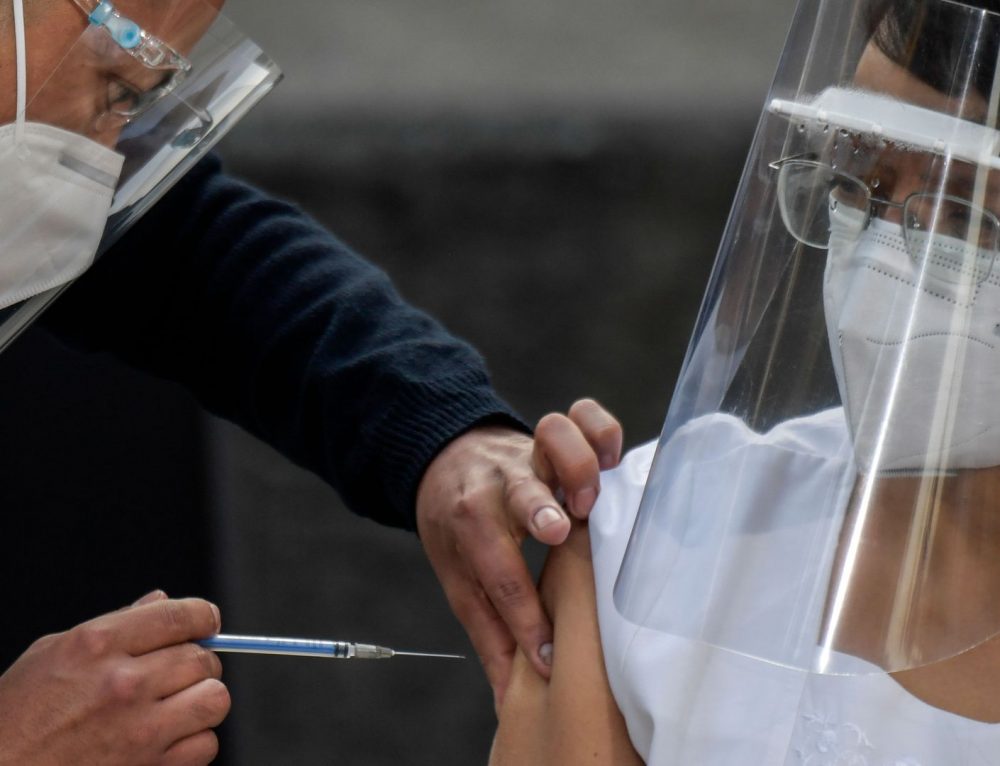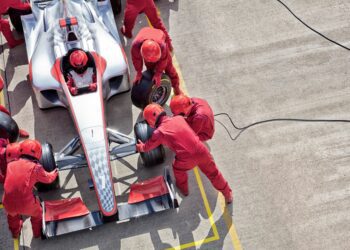The World Economic Forum sparks debate over the magnitude of the vaccine task, which requires bold collective action from multinational organizations, governments and industries.
Digital article by Margi Van Gogh, Ludwig Hausmann, Christoph Wolff and Detlev Mohr
In a year that has seen a pandemic that has left few unaffected, where consequences resulting from attempts to contain the spread of the COVID-19 virus has seen the lives and livelihoods for millions across the globe impacted, the most dire impacts cannot be over stated. In the worst cases, impacts on the livelihoods of those most vulnerable has led to rising poverty levels, with Oxfam reporting that up to 12,000 people per day are facing starvation in 2020.
The inclusive and efficient distribution of safe vaccines is imperative for restoring economic recovery protecting lives. And now that the first COVID-19 vaccine has been administered to a 90-year-old woman in the UK, the world awaits the roll-out of a mass vaccination program after several pharmaceutical companies announced promising vaccine trial results in recent weeks.
The Pfizer/BioNTech vaccine was authorised for emergency use by the UK’s medicine regulatory authority before decisions by the US and Europe. While the first wave will only vaccinate 400,000 of the highest-risk group, the UK has bought 40 million doses of the vaccine, which was recently shown to have 95% efficacy after the second dose. After been granted Emergency Use Authorization, the US has also begun the rollout of the vaccine, with deliveries arriving in distribution centers this week.
As vaccine capacity ramps up , we face a task of unprecedented scale to ensure an inclusive, safe and sustainable distribution to reach frontline healthcare workers, at-risk groups and eventually all people around the world.
The logistical planning involved will push any modelling and supply channels previously used to new limits. More than 12 billion vaccine doses have been announced by all manufacturers in total for release in 2021, in the best case of all candidates succeeding in trials. In this ideal scenario, six to seven billion doses will be shipped in the first wave of pre-ordered vaccines, after which many countries are expected to reach the World Health Organisation’s minimum target of 20% immunization.
COVAX, the initiative co-led by the World Health Organization, Gavi, the Vaccine Alliance and the Coalition for Epidemic Preparedness and Innovations, is working with UNICEF to coordinate the distribution of vaccines to a raft of low to middle-income countries.
To put the scale of the task into perspective, the first wave of vaccines for the 92 countries in the COVAX scheme represents two to three times UNICEF’s yearly routine vaccination program – but up to four to five times its current monthly flows if the vaccines get distributed in a six-month period.
Since March this year, the World Economic Forum Supply Chain and Transport Industry team has convened 35 leading companies across the logistics and transportation ecosystem, who, with support from McKinsey & Company, have been working collaboratively to identify priorities and help address the logistical challenges of the pandemic and the distribution of the vaccines. We have identified a number of key factors that will play crucial parts in a successful roll-out process.
The first relates to the geographies involved in the production process. More than 90% of all COVID-19 vaccine doses are expected to be produced in the US, Europe, India and China, while Africa and Asia (excluding India and China) are expected to be the largest importers. According to a joint scenario model of the World Economic Forum and McKinsey, the largest exporters, Europe and India, are expected to ship approximately 1 billion doses each in the first wave (to reach 20% immunization globally), of which around 600 million could go to Africa and 1,100 million to Asia, apart from India and China.
Ten percent to 20% of the vaccines – i.e., the Pfizer/BioNtech vaccine with announced production capacity of 1.3 billion doses in 2021 – will likely require ultra-cold supply chain facilitation at -70°C, but these will mostly be applied within Europe, North America and Japan, which have or can dedicate resources to build the necessary capabilities.
Although all countries have their own logistical challenges, countries in the global south will need more support to successfully distribute the vaccines. Intercontinental shipments will be affected by constrained air cargo capacity, with an overall reduction of 20-25% expected in the first and second quarters of 2021 (see exhibit below). However, charter flights could solve this if adequate funding is made available.
Logistics capabilities vary among countries in the global south, but are also generally lower for any kind of cold chain logistics than in the mature economies. Particularly challenging are operations in relation to airport handling, warehousing, dry ice facilities (to handle vaccines with deep frozen temperature requirements) and the “last mile” in rural areas.












